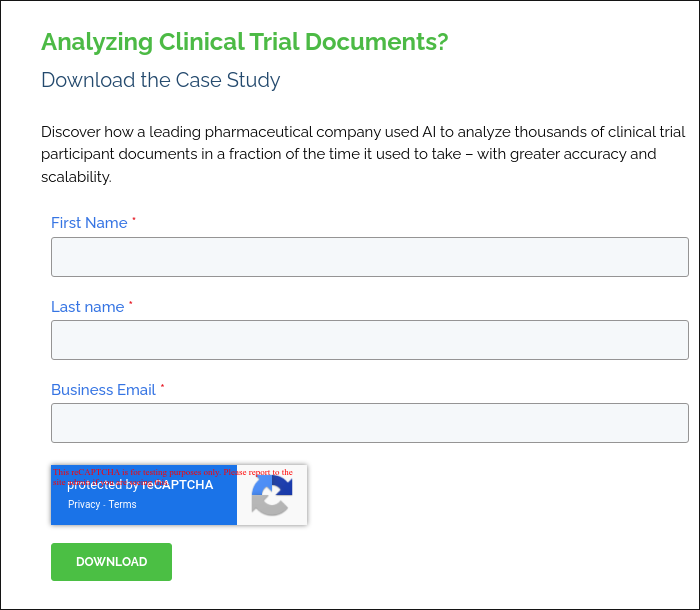AI for Clinical Trial Participant Analysis


Industry
Life Sciences
Challenge
A pharmaceutical company needed to analyze key information from tens of thousands of study participant documents. Manual review was slow, costly, and prone to errors, while traditional data extraction tools failed to handle the varied formats and complex data.
Results
By adopting Docugami’s AI-powered Document Engineering, the company achieved faster, more accurate data extraction at scale. Docugami’s semantic XML Knowledge Graph captured all the information in each document, including the relationships between data points, enabling detailed participant analysis across thousands of records.
KEY FEATUREs
- Semantic XML Knowledge Graph Capturing Full Document Structure
- Automated Discovery of Language Patterns Across Complex Documents
- Scalable Participant Data Analysis Across Thousands of Records
- Flexibility to Add New Data Points Without Reprocessing
- Faster, More Accurate Insights for Protocol Development and E-Clinical Systems
The Challenge: Manually Processing Study Participant Documents
Accessing this information required painstaking manual labor to read each individual study participant document and catalog the required information.
This manual process was extremely time consuming and expensive, and the quality of data generated was often suboptimal due to human error.
The firm had also tried several data extraction software tools, but the complexity of the documents and the wide variations in format had led to poor, unreliable results.
The Solution: Docugami's AI-Powered Solution
Looking for a better solution, the firm turned to Docugami’s AI-powered Document Engineering.
Unlike traditional data extraction tools, which are often limited to certain fields or types of information, Docugami automatically discovers language patterns and then creates a full semantic XML knowledge graph of all the information in every document, including the hierarchical relationships between all of the individual pieces of information.
The Results: Immediate Benefits and Scalability
The firm found that Docugami offered superior speed and accuracy and the ability to scale seamlessly across huge collections of study participant documents.
The deep parsing and understanding of each document provided the firm with the ability to run detailed analyses of thousands of study participants.
If a new data point or criteria needed to be added to the analysis, it was already identified and available - no need to go back to square one.
"Clinical trial studies generate enormous volumes of documents that many clinical systems and processes have not been able to access for key information such as objectives and endpoints, schedule of activities and inclusion/exclusion criteria,” says Stan Wysocki, former venture lead for Cognizant, a global consulting company that helps clients modernize technology, reimagine processes and transform experiences so they can stay ahead in our fast-changing world.
"Docugami automatically identifies key information in clinical trial documents, making critical information available to create documents for new protocol development and bringing key configuration information for e-clinical systems like EDC and RTSM, dramatically reducing the time it takes to bring new drugs and medical devices to market," Wysocki added.
